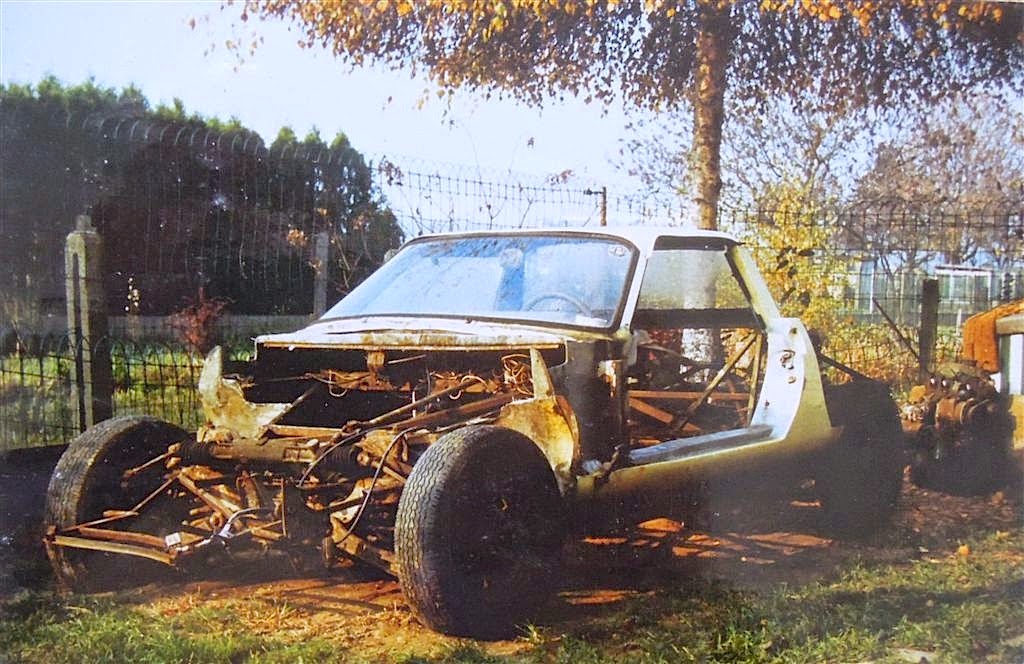Some two years ago I tried to find out the whereabouts of a Mini powered Méan Sonora, built in an old Belgian castle. Despite ending up for a closed door when visiting the actual place, I found out something. I published the car's story in two articles - read
part 1 here,
part 2 here. But the question remained: What happened to the car. I wrote: "Perhaps somebody here will be able to tell?"
Now, we're almost two years ahead but that somebody has finally called in. It's Louis Lempereur who knew of the car for many years but only just managed to rescue it. He wrote the third part of a fascinating story and I am privileged to share it with you. This is what he wrote:
"I was born in Liège, Belgium in 1946 and when student, used to meet Jacques d'Heur, founder of Méan, in cafés downtown. Elie Boone, a friend from Brussels, owned a Méan Sonora since 1984. The car was waiting restoration in his garage. Having known Jacques, I was interested to buy this car, but despite several requests, Elie did not want to sell it. But at our early meeting last january, surprisingly, he told me the car was available. And so, we made the deal."
The car as it was in 1984, Here in Elie Boone's garden
Picture courtesy Louis Lempereur
This picture also dates back to 1984. The Mini engine is just visible
Picture courtesy Louis Lempereur
"This car had a Mini engine while most Sonoras were built with Cortina or Renault engines. I did not know about any Méan with a Mini engine and so I attempted some research on the internet and found the Maximum Mini reports. I could not believe what I was reading! Promising a special car for a show and forgetting about it, then building one in five days, the story is so typical for Jacques!"
"While looking more carefully at the pictures from the Maximum Mini site and those I got from Elie, I could say the car from the site is the one I found. The tyres are the same, also the steering wheel, the little radiator (not from a Mini ) next to the engine… The car sits very high on its wheels because the gearbox linkage runs, unprotected, under the chassis. Some parts of the body still have the original silver colour. It was really nice to see pictures from my car when it was new at the Méan 'factory'!" Thanks to the Maximum Mini report, I also learned about Daniel Dodeur, who I knew before as we ran the 2CV 24H race at Spa together in 2007. He now runs the Méan register. See their web site for more info
here"
"When the car arrived home, I could see the very bad state it was in. The chassis was completely rotten and needed replacement. While searching for a local company to rebuild it, I met with several people who had worked with Jacques while they were young. Always a happy experience! Some of them worked as students during their holidays and were not really qualified for the job, which explains some of the bad workmanship. While cleaning the Mini subframe I found it was badly repaired probably because the donor Mini purchased in the scrap yard was damaged! The subframe is also mounted tilted in the chassis - for some specific reason or due to emergency?"
The Mini powered Méan Sonora as Louis bought it earlier this year - all complete...
Picture courtesy Louis Lempereur
… but chassis is well-rotten and needs lots of work. The right men have been found now
Picture courtesy Louis Lempereur
Welding appears to have been done in a hurry - well, the car was built in 5 days...
Picture courtesy Louis Lempereur
The interior seems surprisingly well kept and original - note Mini key fob!
Picture courtesy Louis Lempereur
The Méan's full reconstruction has now started - this is just prior to taking it apart
Picture courtesy Louis Lempereur
"Searching for good parts, I ended up having dismounted the car completely. I am now heading for a complete reconstruction. On the Mean website, there is a picture of a Sonora taken in Monaco. My target is to go there with my car and take the same picture. But that will be another story!" Keep us posted Louis, you are a star contender for Find of the Year!
Picture of Méan Sonora in Monaco has inspired Louis to go there once finished
Picture courtesy Mean Motor Engineering
What a spot! Taken during the Monaco Grand Prix of - we think - 1969
Picture courtesy Mean Motor Engineering

































